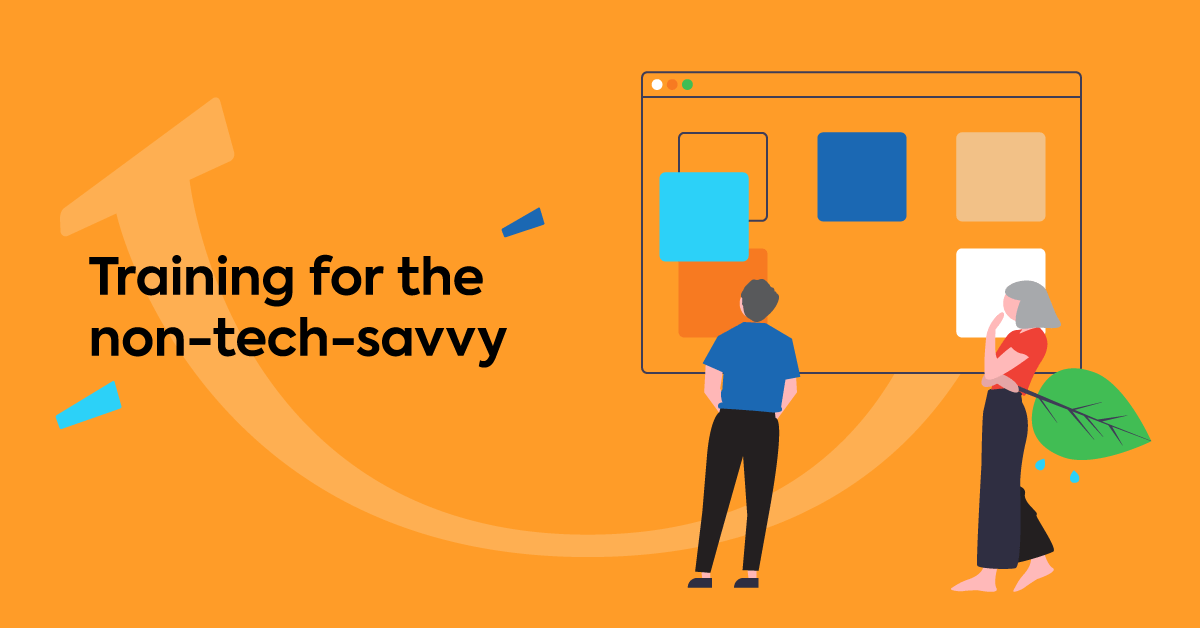Self-paced learning courses put trainees in charge of their eLearning experience. Though they offer a broad range of benefits, lack of motivation and mental focus can prove to be problematic. In this article, we’ll share 7 helpful tips for creating effective and engaging self-paced eLearning courses for people who want to learn at their own pace.
How To Create A Self-Paced eLearning Course
Before online training and social learning, there were distant learning courses. In the good old days, they were mailed directly to your door in the form of a CD-ROM. Today, accessing self-paced eLearning courses is as easy as clicking a download button or logging into a Learning Management System.
But with modern technology come brand new eLearning obstacles. There are so many distractions to contend with, and so much information flowing in at a constant rate. Fortunately, there are ways to increase the effectiveness of self-paced eLearning courses and get solo online learners actively involved.
1. Create Personalized eLearning Plans
One of the most significant benefits of this type of eLearning is personalization. Online learners get to choose when and where they complete the self-paced training activities. However, there must be a foundation they can build on, such as a customized eLearning plan.
This plan should outline their goals, development timelines, and the eLearning activities or courses they will use to achieve their learning objectives. In some cases, learning contracts are a valuable tool, particularly for individuals who need more structure or accountability.
2. Cultivate A Supportive Online Community
Learning at your own pace can be lonely, especially for those who crave social interaction. Fortunately, you can offer your online learners ongoing support by fostering a supportive online community. eLearning forums, social media groups, and video conferencing software are just a few of the online tools at your disposal.
You should also develop a set of online community guidelines that specifies how online learners can connect with their facilitators and the typical response timeframe. For example, they’re able to contact them via email and can expect a reply within 24 hours.
Mentoring is yet another way to complement self-paced training, as it gives online learners the opportunity to benefit from more experienced peers.
3. Focus On Accessibility
Self-paced learners must be able to access the content quickly and conveniently, on any platform. More often than not, they’ll be using their mobile devices to log in to the LMS. Thus, your LMS should be user-friendly and the eLearning course layout easy to navigate.
It’s also wise to assume that every member of your audience is new to the eLearning experience. Provide clear instructions for how to login to the LMS, how to access the eLearning materials, and what happens next. For example, include a step-by-step walkthrough for turning in online assignments. In fact, you may want to create an FAQ or support section on your eLearning course page that features tutorials, eLearning videos, and other helpful online resources.
Build engaging self-paced online courses with TalentLMS
The training platform that users consistently rank #1.
Easy to set up, easy to use, easy to customize.
4. Incorporate Social Collaboration Activities
In addition to cultivating a supportive learning community, you should also incorporate collaborative eLearning activities to encourage peer-to-peer interactions. For example, asking online learners to team up and create blogs, online presentations, and tutorials with the help of eLearning authoring tools.
There are various project management online platforms that allow online learners to share feedback and collaborate on online assignments. Many even feature group calendars, task trackers, and due date reminders to make the process more productive.
Social activities allow online learners to engage in meaningful online discussions and share eLearning experiences with their peers. They are also able to build skills and expand their knowledge base by observing and modeling the behaviors of others.
5. Create eLearning Content That Is Easily Digestible
Most self-paced online learners have opted for the asynchronous approach because of their schedules. They don’t have a lot of time to learn, which means that you need to make your eLearning content easily digestible. This applies to the content formatting, as well as the length. When creating a self-paced online course, avoid lengthy paragraphs, and highlight key information with bulleted lists. Use subheaders, italics, and bolded fonts to grab their attention.
You should also integrate microlearning materials to reinforce important ideas or concepts. For example, a brief eLearning tutorial that walks them through the task or an eLearning simulation that offers real-world experience.
Last, but not least, create a clickable menu for your eLearning course, where your users can easily access different eLearning modules and self-training activities.
And, don’t forget, if you’re stuck about what content you should provide your eLearners, you can always focus on creating an eLearning problem statement and facilitate your eLearning content development process in seconds.
6. Assess Online Learner Progress Periodically
Self-paced eLearning courses can be a bit tricky when it comes to gauging online learner progress. Facilitators aren’t in constant contact with their online learners. As such, they can’t observe their behaviors or evaluate their performance.
Thankfully, LMS solutions feature analytics and reporting tools that provide powerful insights. For example, you can see who completed the eLearning course, how long it took, and how successful they were.
eLearning assessments are also a great diagnostic tool, particularly when online learners are tested early and often. Test online learners before and after each eLearning course or module to evaluate their progress and identify strengths. This allows you to identify areas that need to be improved, as well. Then you can recommend additional eLearning activities or modules to bridge the gaps.
7. Variety Is The Spice Of Self-Paced eLearning
Boredom is the foe of self-paced eLearning. If the content doesn’t resonate with users and keep them fully engaged, chances are they won’t complete their eLearning course. This is why it’s essential to integrate a broad range of eLearning activities and cater to different learning preferences. For example, visual learners require eLearning videos and presentations, while kinesthetic learners prefer branching scenarios and serious games.
Survey your online learners beforehand to identify the best approach and create a good mix of eLearning content. This will also help you gauge their level of tech know-how so that you can choose the ideal level of interactivity in eLearning. For instance, tech-savvy online learners prefer multimedia elements that are mobile-friendly. In addition, make sure that you include subtitles or closed captions for your online learners with disabilities.
Next steps
Self-paced eLearning courses should allow learners to explore the subject matter on their own and at their own pace. But learners should also have the chance to interact with their peers and receive ongoing support, as needed. Research your eLearning audience to identify their preferences, expectations, and goals so that you can provide an exceptional self-paced eLearning experience.
Unlike live training, self-paced training doesn’t happen in real-time for all learners and their instructors. Do you want to find out the key differences between asynchronous and synchronous learning? Read the article Synchronous vs Asynchronous Learning: Can You Tell the Difference? which compares and contrasts these popular approaches so that you can develop an effective eLearning strategy.
| Tags: Employee Training




